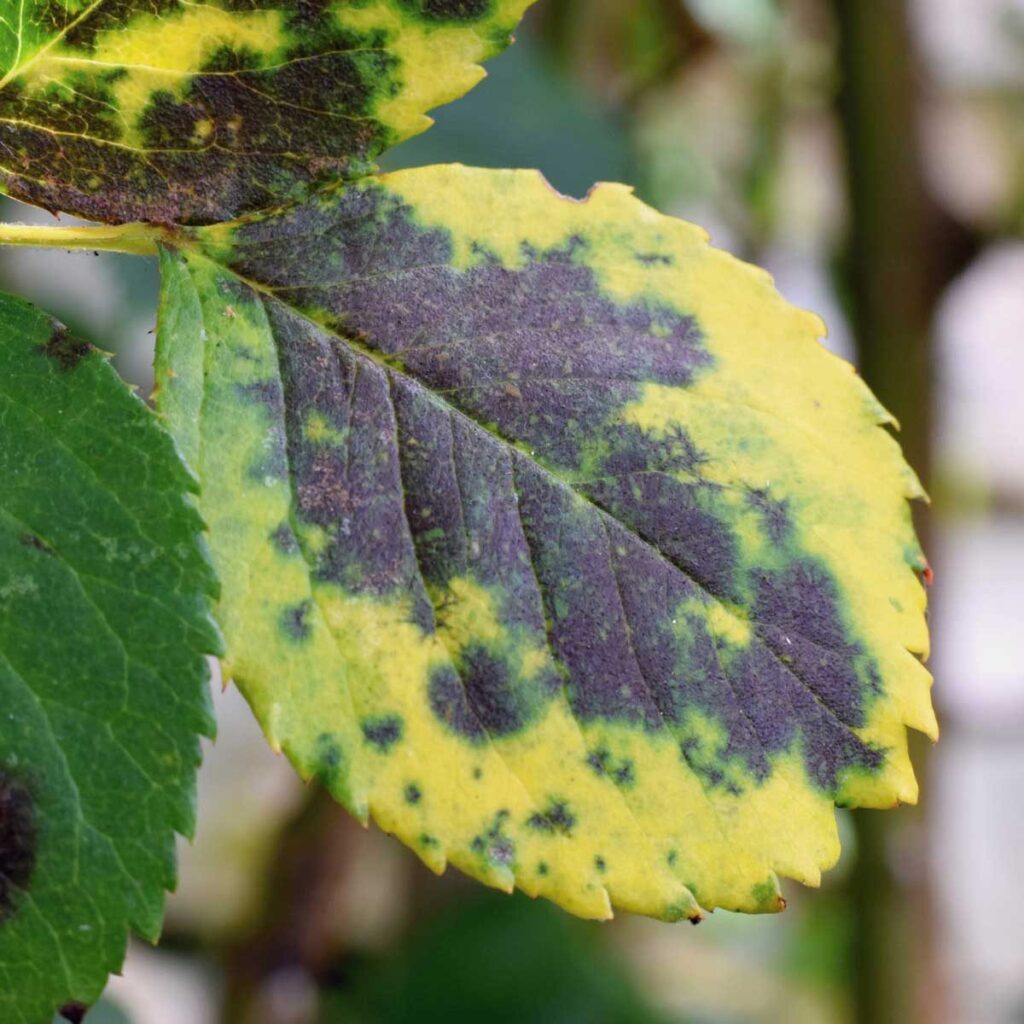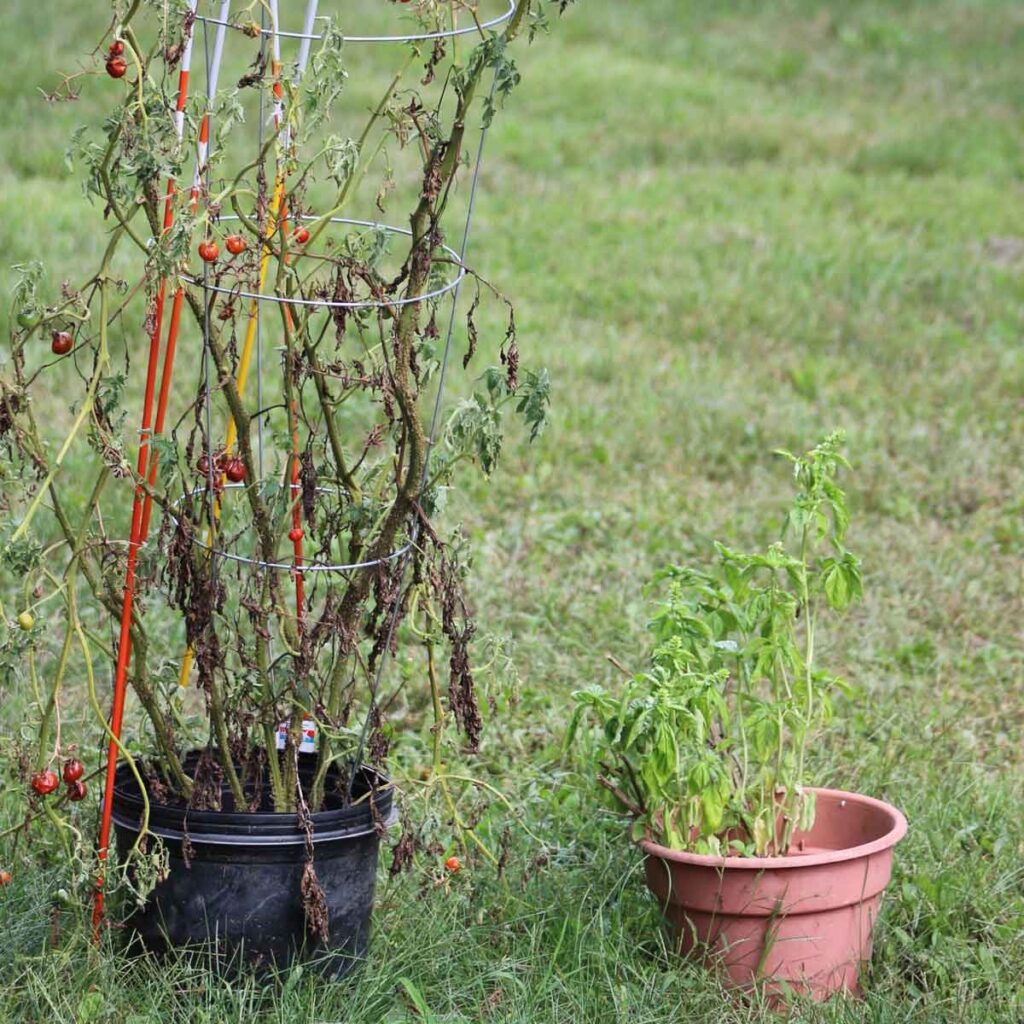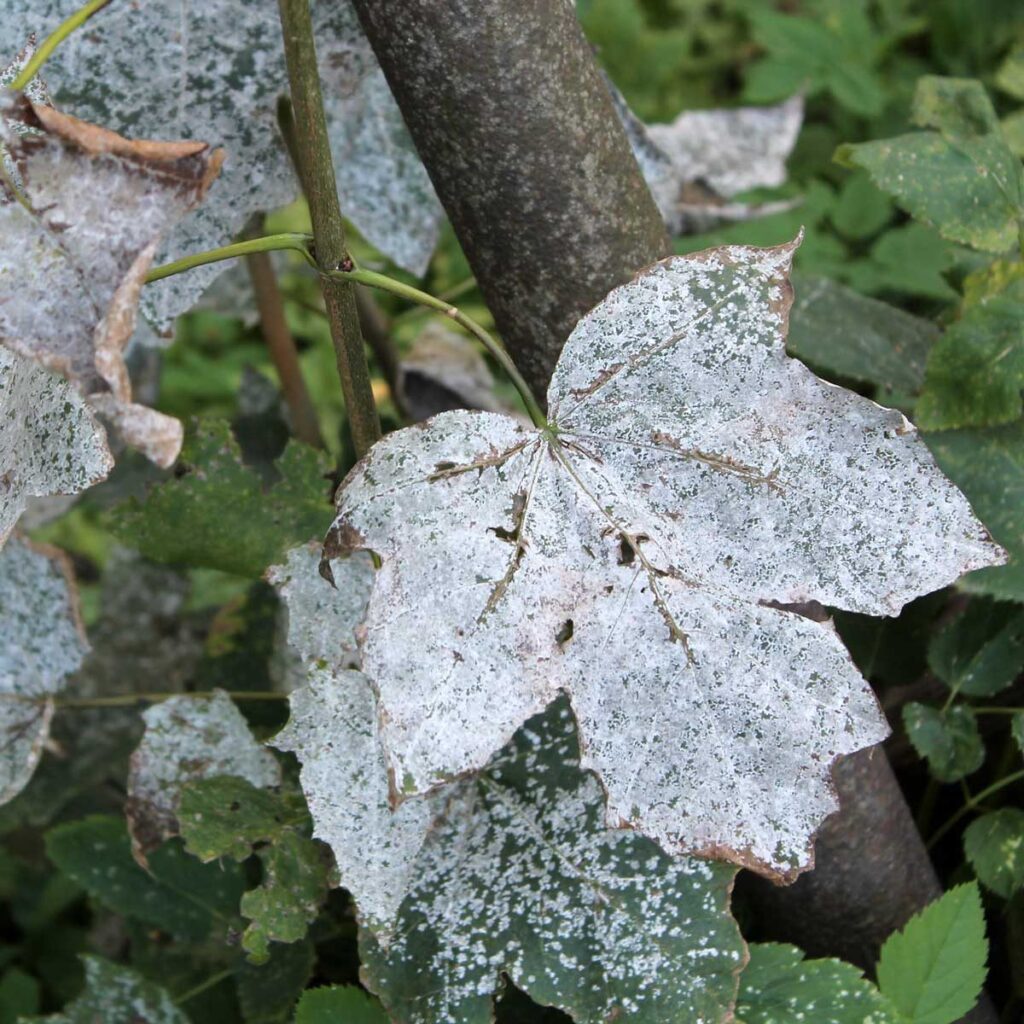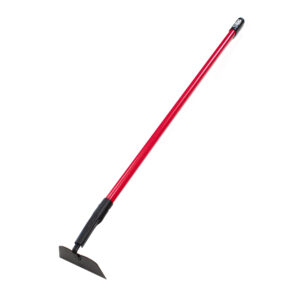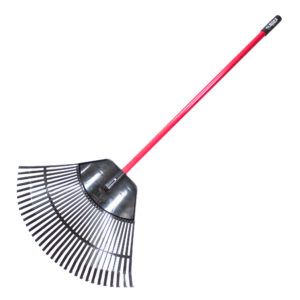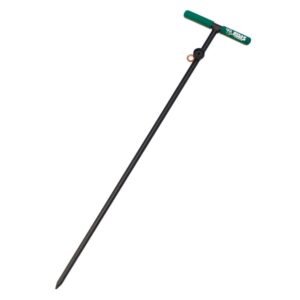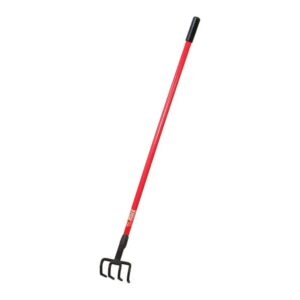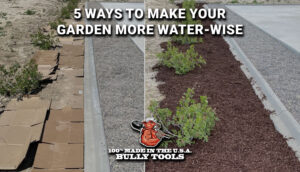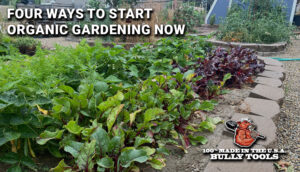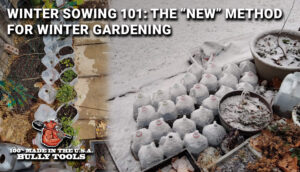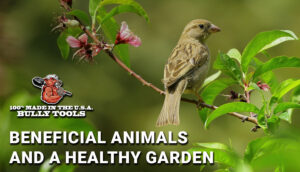8 Steps to Keeping a Healthy Garden
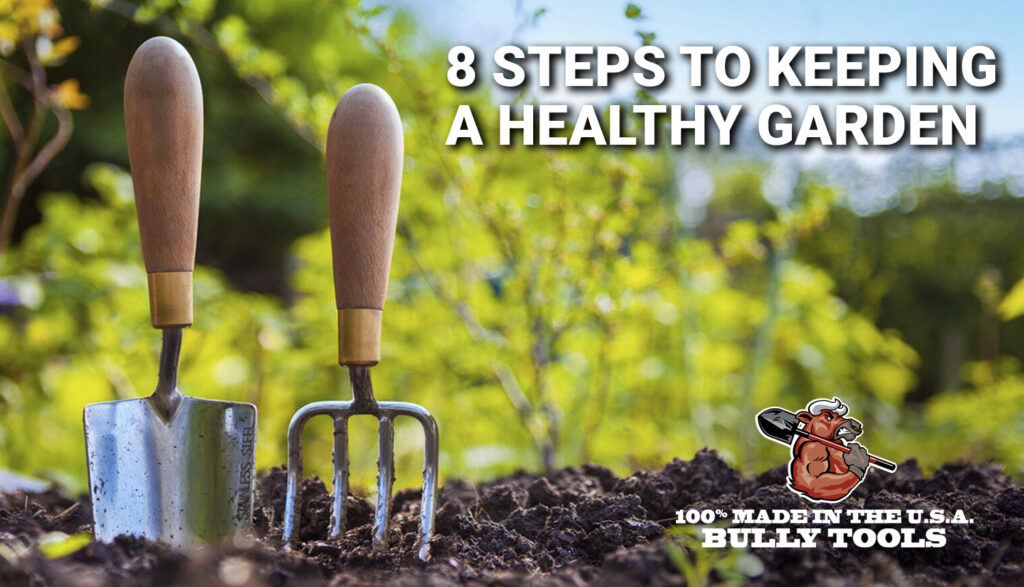
We are rolling into summertime, and now that your plants’ buds are blooming, you will need to keep up with them to make sure that they stay healthy and produce fruit all season long.
1. PREP YOUR TOOLS
Before starting any project, you need to make sure that your tools are in fighting shape. For general garden maintenance, make sure to have:
- To rid weeds: hand trowel, garden hoe, dandelion weeder, specialty weeding hoe
- To cut and prune: hand pruners
- To move around dirt and mulch: scoop shovel, hand rake, shrub rake
- To make yourself comfortable: gloves, stool, kneeling pad
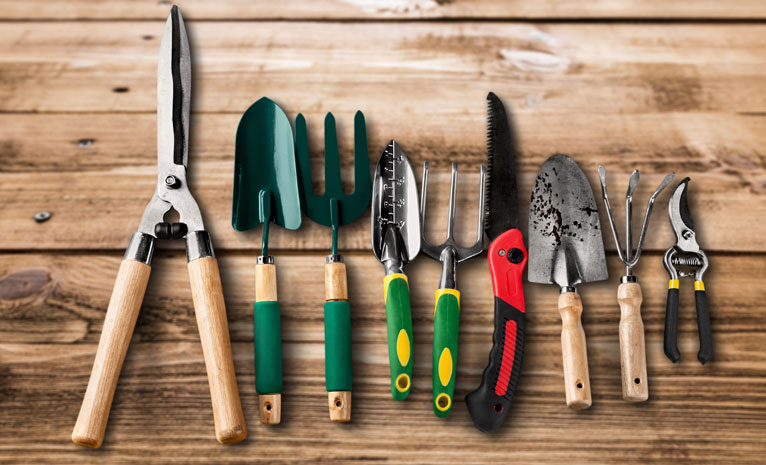
You should always clean off your garden tools are you use them to prevent dirt from caking on. Any tools with a blade should be sharpened to ensure that you get an easy cut.
2. CHECK THE HEALTH OF YOUR PLANTS
BEFORE YOU BUY
The best way to ensure that you’re going to grow healthy plants is by thoroughly examining them before you purchase. Don’t buy plants with leaves that are pale, yellowing, or brown, look dried out, or that are root-rot. A rootbound bottom to a plant is not always a sign of an unhealthy plant – it will just need to be repotted soon – but if a plant is overwatered or diseased, the roots can begin to form fungus and decay.
DISEASE
A huge deterrent to plant growth is disease. You can usually gauge the health of your plants by their appearance. Many plant diseases will cause leaves or stems to sprout spots or grow powdery mildew. Earth’s Ally, an organic gardening product company, created a detailed article naming the cause and ways to cure many Common Plant Diseases.

Black spot 
Verticillium wilt 
Powdery mildew
3. GET RID OF WEEDS
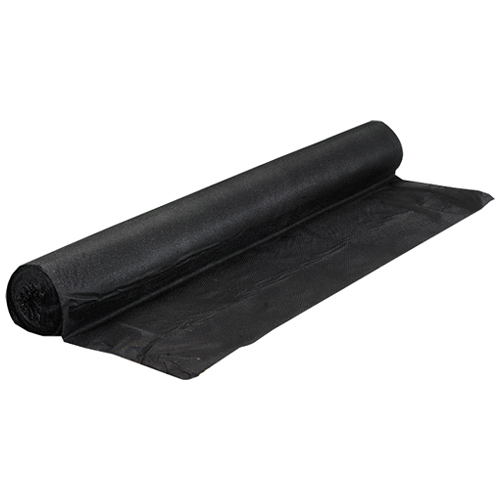
There are tons of products available online or at gardening centers that will help you fight weeds. These products like landscape fabric and herbicide, for example, have properties that keep weed seeds from germinating. There is controversy, though, over the effectiveness of landscape fabric. As the fabric lays over a spot for some time, the soil underneath it does not receive the air, water, and nutrients that it normally would without the cover. However, this issue has been addressed by multiple manufacturers like Jobe’s who creates a “breathable” WeedBlock landscape fabric.
It is also important to note that while these fabrics reduce and stunt the growth of weeds, landscape fabric will not fully prevent weeds from sprouting. So, don’t be upset when you have to pull a few weeds… it could be a lot worse.
Instead of landscape fabric, some people prefer to spray their garden or planting area with herbicide. Organic herbicides are a type of pesticide that targets and kills unwanted weeds and plants. You can choose between pre-emergence and post-emergence herbicides, and both have been proven to be safe and effective for use in gardens. It’s always a good idea to do some research into the kinds of chemicals that you will be adding to your garden – you wouldn’t want to harm yourself or your plants – so be sure to check out organic additives, as they are better for your plants and for the environment.
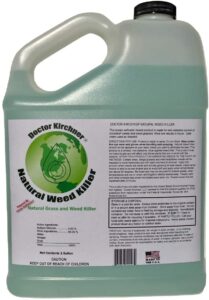
Bob Vila, a great online source for gardeners and home improvers, tested out the most popular organic weed killers and rated the Doctor Kirchner Natural Weed & Grass Killer as the best overall. Read their article The Best Organic Weed Killers to Maintain Your Garden to find out how the others compare.
Don’t wait forever to pull your weeds either. The taller and thicker weeds get, the stronger their roots become, and they will be harder to pull out of the ground. Your best bet is to get rid of weeds as you see them. By weeding every two to three days either by hand or by gently scraping with a hoe, the young weeds will come out no problem.
If your weeds do get out of hand – either in number or in size – pull them when the soil is wet. It will be softer the day after a rain shower or immediately after watering than it would be otherwise, making the weeds slide out.
4. INSPECT YOUR GARDEN FOR PESTS
Not all insects are harmful to the growth of your plants or the health of your backyard, but certain pests having been damaging crops for centuries. Thankfully, in all that time, solutions to this bug problem have been discovered, but it doesn’t make the problem less common.
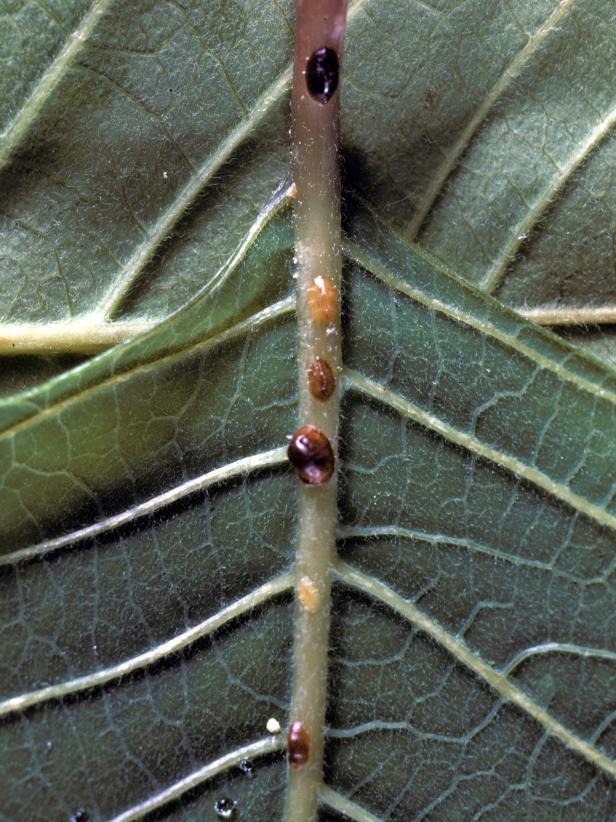
Pest problems can be identified by looking at your plant. Even if you don’t see the bugs, you can tell your plant has been infested if it is wilting, has holes or bites taken out of the leaves, develops spots, or dies. The Old Farmer’s Almanac has a detailed library of Garden Pests and Diseases that can help you identify your type of pest problem and how to stop it.
If you see a lot of bees, butterflies, flies, or moths – don’t worry! These insects are pollinators and are essential to your plants and the environment. Other beneficial garden insects include ladybugs, praying mantises, green lacewings, and parasitic wasps. These guys are predators that feed off of the pest insects so leave them be.
But if your backyard’s pests are killing your plants, you can treat your planting area by using an herbicide, pest traps and barriers, or an organic spray. Try to avoid using chemical sprays if you can. Synthetic garden products including chemical fertilizers, herbicides, and pesticides – while at one time very popular and effective at killing unwanted garden pests and weeds – have been found to be very harmful to the environment, your plants, and yourself.
5. MANAGE YOUR SOIL’S NUTRIENTS
Maintaining your soil’s health is the most important part of growing any garden or agricultural system. Without healthy, nutrient filled soil, no plant stands a chance of survival. There are many physical, chemical, and biological properties that influence your plant’s growth, and unfortunately, not every plant will grow well in every backyard.
Your backyard’s soil type and pH level are dependent on the region you live in and are influenced by your local weather patterns. You can improve your soil’s natural structure by adding organic material like compost, manure, or cover crops to it. An annual to biannual tilling can help break up soil compaction and allow new paths for water and nutrients to reach roots, but excessive or aggressive tilling like with a rototiller can disturb the soil too much and cause adverse, negative effects to your plant’s growth.
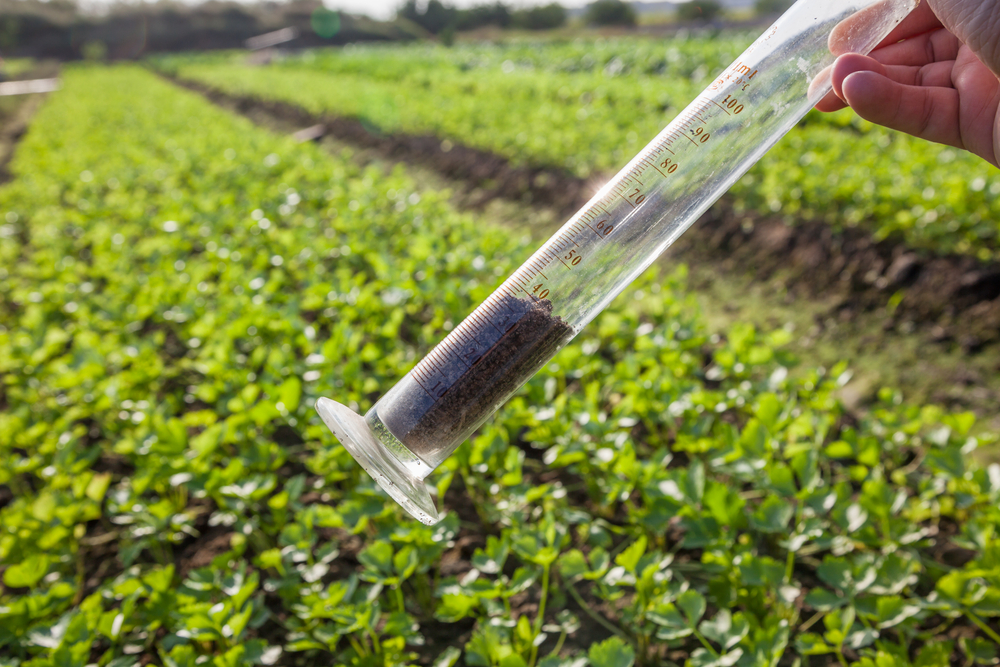
To grow certain plants, you may have to adjust the pH of your soil. To do this, you must first find out your home’s natural pH, which can be concluded through a simple soil test. Some fruits and vegetables require specific acidity (or lack of) to grow properly, but adjusting the pH will be a process. The soil test will provide you with all the right measurements of garden lime and other products needed to lower the acidity of your soil. Likewise, if your soil needs to be more acidic, you will be provided with the amount of powdered sulfur required to lower your soil’s amount of alkaline.
However, do not add lime or sulfur just to add it. Research is your best friend. You only need to adjust your soil’s natural properties if the plant you want to grow requires it. You can do more harm than good if you amend the soil and then end up growing plants that prefer a different pH level.
You can also treat your soil by adding other inorganic materials like fertilizer or plant food. Products like Miracle-Gro Plant Food are very popular among seasoned planters and can be beneficial in many gardens.
WHERE CAN I GET A SOIL TEST?
You can purchase an at-home soil test kit online or send a sample to an agricultural service or university lab for testing. The accuracy of at-home test kits varies by brand, but the American Society for Horticultural Science tested five commercially available colorimetric soil test kits and found that La Motte Soil Test Kit and Rapitest lead the pack. They were determined to be, respectfully, 94% and 92% accurate when compared with a standard laboratory analysis of that same sample.
If you want guaranteed accuracy, you can send your soil sample to a local or regional lab. Many colleges and universities offer this service, or you can research a garden/agricultural center that accepts soil samples.
6. STAKE PLANTS
Some tall, flowering plants wil require staking for support and protection to grow properly. These plants grow heavy fruits off of thin, fragile stems, and without caging or staking, as they grow they will become top-heavy and resort to growing outward on the ground. As a result, your fruits and vegetables can begin to rot or become easy pickings for insects and creatures to go after.
Not only does staking your plants keep them healthy and safe, but you’ll also be able to plant more by taking advantage of your garden’s vertical space. And adding stakes is another way to dress up your garden! You can keep it classic and go for the same style and color of stake for each plant or mix and match.
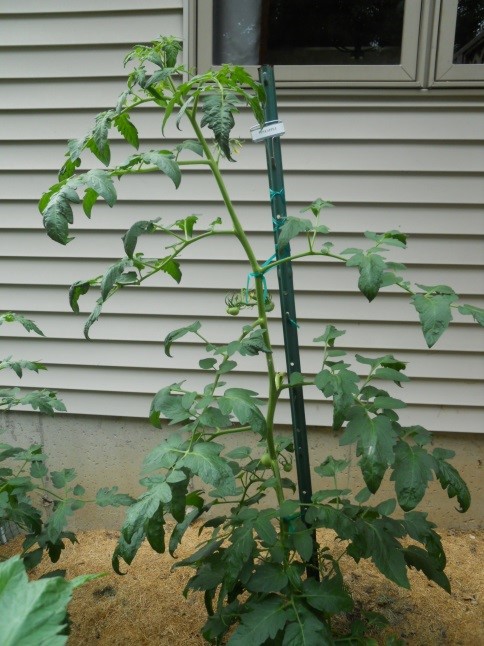
PLANTS THAT REQUIRE STAKING
- Peas
- Blackberries
- Cucumbers
- Various beans
- Tomatoes
- Some peppers
- Gourds and pumpkins
- Some flowers
- Young trees
7. WATER PROPERLY
While watering isn’t the most complicated task that comes with gardening, it is one of the most important. No matter where or what you grow, you will need to supply your plants with an adequate amount of water throughout its lifespan for it to grow beautifully, bear edibles or flowers, and last the summer.
Here are some things to keep in mind while you water:
- DON’T OVERWATER. Overwatering can cause disease or your plants’ growth to become stunted, so instead, water less often but more in a more calculated way. When you water, water deeply, instead of daily to conserve water and promote a proper wet to moist cycle for your soil.
- AIM FOR THE ROOTS. To water your plants thoroughly, moisten the base of your plant including the entire root zone. If you’re watering a flower or vegetable bed, be sure to get in between the plants with a gentle pressure to not disrupt or damage the growth. You can check the moisture of your plants with a soil moisture gauge. They’re inexpensive and perfect for houseplants and indoor/outdoor potted plants as well as your beds outside. They reach inches into soil and identify when your plant needs watered and is a great way to prevent overwatering.
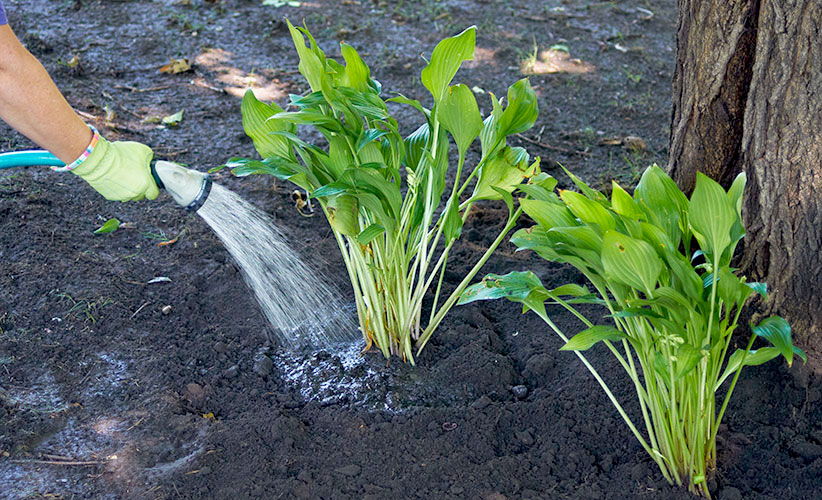
- USE WATER-SAVING PRACTICES. Collect rainwater in a barrel and use it to fill your watering can. This practice will save you money, conserve resources, and is the most natural form of nourishment that you can use to feed your plants.
- WATER EARLY IN THE MORNING OR VERY LATE IN THE DAY. Your soil and the sun are the coolest during these times. By watering early in the morning or during sunset, there is less chance of that water evaporating over the next few hours, as it would do if you water in the middle of the day.
- FIND A PLANT BABYSITTER IF YOU TRAVEL. If you’re going on vacation this summer, make sure you plan out how your plants will get watered. Ask a neighbor or family member to stop by once or twice a day while you are away.
- DON’T FORGET ABOUT YOUR LAWN, TREES, AND SHRUBS. Just because they weren’t planted this year that doesn’t mean that your grass, trees, and shrubs can survive on rainwater alone. If you live in an area that does receive an adequate amount of rain and you have mature trees and shrubs, check their health occasionally. If you notice anything off about their appearance or dead, brown grass, give the area a thorough watering with 1″ to 1 1/2″ of water, in increments, one to two times a week until you notice a visual difference. If you recently planted grass, a tree, or set of shrubs, make sure to water often according to the planting instructions. Newly planted flora needs more moisture and attention than established, mature flora.
8. HARVEST
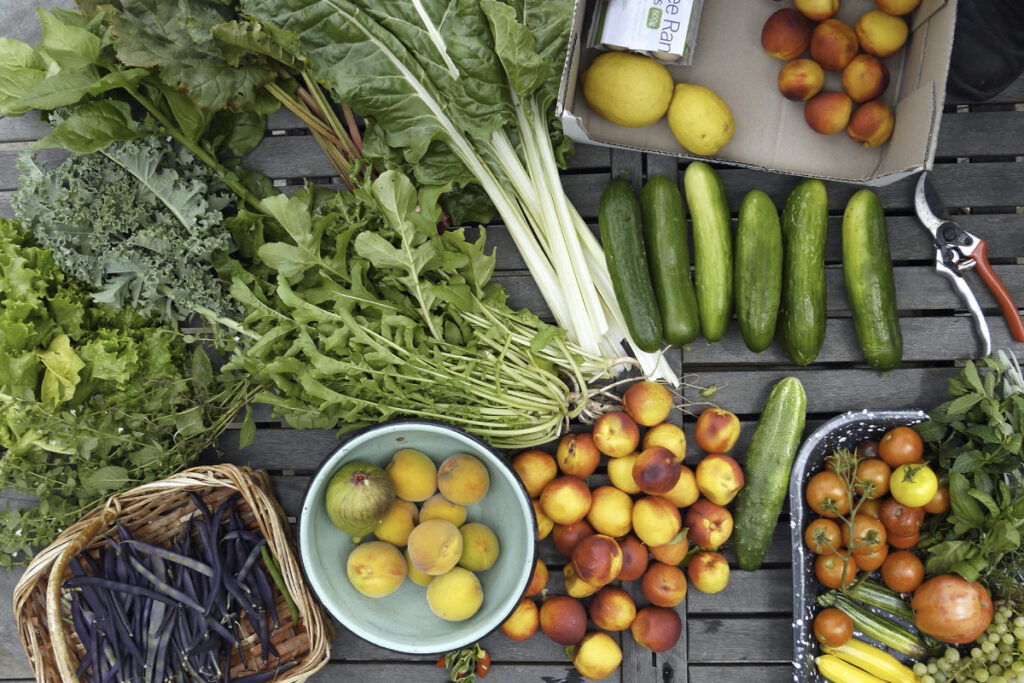
Last but not least, feast! All plants follow their own schedules to maturity. You can usually tell when your fruit or vegetable is ready to pick based on its appearance – we’ve all seen full-grown produce in the grocery store – but for your plant to grow and produce more, you will have to harvest your first round of edibles correctly. Harvest to Table released an impressive Vegetable Harvest Times guide that describes, in detail, the size, color, and description of many popular, full-grown vegetables.
When your plants are ready for their first picking, be gentle. Ripe fruits and vegetables should break off their vines easily with a light pull, but if they don’t, use garden sheers or hand clippers. Avoid pulling too hard when harvesting as breaking or ripping the plant’s stalk could lead to disease.
Always thoroughly read the information provided for you on your seed bag or starter plant. They provide you with the best advice for the particular species of edible you’re planting.
IT’S THAT SIMPLE!
Keeping your garden alive is an easy task if you give the area attention consistently throughout the summer. Planting is a really interesting way to get to know your region’s climate system and the unique piece of the earth that you have at your disposal right in your backyard. If you’re serious about landscaping, always make sure to do research on the best plants to grow in your particular climate and how to properly take care of them, given your home’s natural soil and pH properties.
And – as every gardener knows, the most successful projects begin with the best tools. Shop our selection of 100% Made in the USA hand tools that are guaranteed to be tough on soil but not on your wallet.


